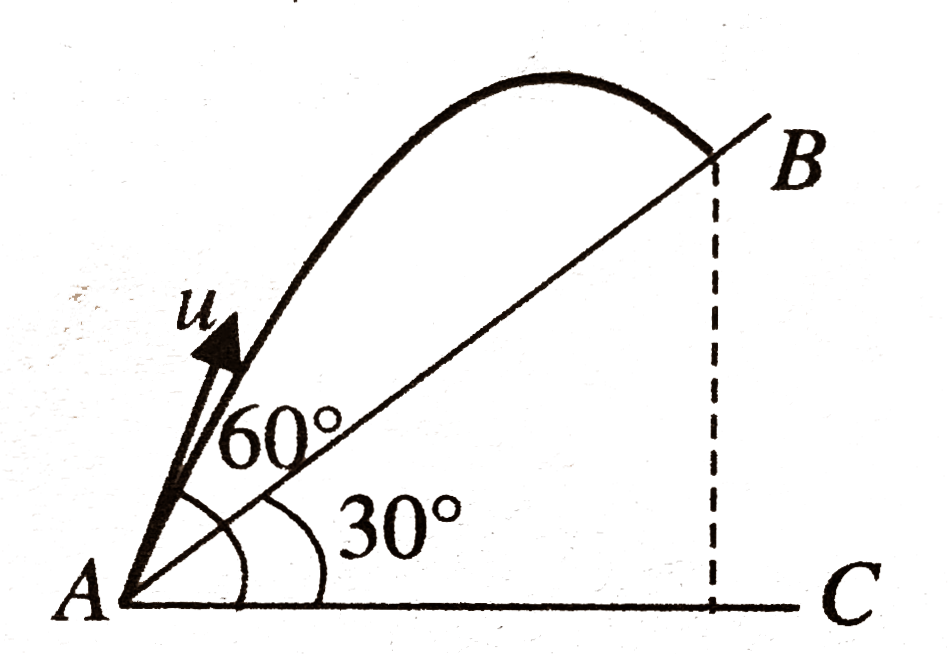A particle executes SHM in accordance with x=Asinωt. If t1 is the time taken by it to reach from x=0 to x=√3(A/2)and t2 is the time taken by it to reach from x=√3/2A to x=A , the value of t1/t2 is
2
12
3
None of the these
The correct Answer is:D
To solve the problem step-by-step, we will analyze the motion of the particle executing simple harmonic motion (SHM) given by the equation x=Asin(ωt).
Step 1: Determine t1
We need to find the time t1 taken by the particle to move from x=0 to x=√32A.
1. Set x=√32A in the equation:
√32A=Asin(ωt1)
Dividing both sides by A (assuming A≠0):
sin(ωt1)=√32
2. The angle whose sine is √32 is π3:
ωt1=π3
3. Therefore, we can express t1:
t1=π3ω
Step 2: Determine t2
Now, we need to find the time t2 taken by the particle to move from x=√32A to x=A.
1. We know that when x=A, the particle reaches its maximum displacement. Let the total time for one complete cycle be T:
x=A⟹A=Asin(ωT)
This implies:
sin(ωT)=1⟹ωT=π2
Thus,
T=π2ω
2. The time t2 can be expressed as:
t2=T−t1=π2ω−π3ω
3. To simplify t2:
t2=π2ω−π3ω=πω(36−26)=πω⋅16=π6ω
Step 3: Calculate the ratio t1t2
Now we can find the ratio t1t2:
t1t2=π3ωπ6ω=63=2
Final Answer
Thus, the value of t1t2 is 2.
We need to find the time t1 taken by the particle to move from x=0 to x=√32A.
√32A=Asin(ωt1)
Dividing both sides by A (assuming A≠0):
sin(ωt1)=√32
ωt1=π3
t1=π3ω
Now, we need to find the time t2 taken by the particle to move from x=√32A to x=A.
x=A⟹A=Asin(ωT)
This implies:
sin(ωT)=1⟹ωT=π2
Thus,
T=π2ω
t2=T−t1=π2ω−π3ω
t2=π2ω−π3ω=πω(36−26)=πω⋅16=π6ω
Now we can find the ratio t1t2:
t1t2=π3ωπ6ω=63=2
Thus, the value of t1t2 is 2.
Similar Questions
In the time taken by the projectile to reach from A to B is t. Then the distance AB is equal to.
 .
.
View SolutionA particle performs SHM about x=0 such that at t=0 it is at x=0 and moving towards positive extreme. The time taken by it to go from x=0 to x=A2 is____ time the time taken to go from x=A2 to A. The most suitable option for the blank space is
View Solution
Knowledge Check
A particle executes S.H.M. between x=−A and x=+A. The time taken for it to go from 0 to A/2 is T1 and to go from A/2 to A is T2. Then
AT1<T2BT1>T2CT1=T2DT1=2T2A particle executes S.H.M. between x=−A and x=+A. The time taken for it to go from 0 to A/2 is T1 and to go from A/2 to A is T2. Then
AT1<T2BT1>T2CT1=T2DT1=2T2
A particle is performing SHM of amplitude 'A' and time period 'T'. Find the time taken by the particle to go from 0→A/2.
View SolutionA particle is executing SHM with time period T Starting from mean position, time taken by it to complete 58 oscillations is,
View SolutionFind the time taken by the particle in going from x = (A)/2) to x=A Hint :Timetaken→goomx=0→x =A Time taken to go from x=0→x= (A)/(2)Requiredtime= t_(1) - t_(2)
View SolutionDisplacement-time equation of a particle execution SHM is x=A sin(ωt+π6)
Time taken by the particle to go directly from
x=−A2→x=+A2is
View SolutionA cane is taken out from a refrigerator at 0∘C. The atmospheric temperature is 25∘C. If t1 is the time taken to heat from 0∘C to 5∘C and t2 is the time taken from 10∘C to 15∘C, then the wrong statements are
(1) t1>t2
(2)t1=t2
(3) There is no relation
(4)t1<t2
View SolutionA particle startsits SHM at t=0 . At a particular instant on its way to extreme position , x=A2 . Find the time taken by the particle to come back to this point after passing through the extreme position.
Hint :t1= time taken to go from x=0 to x=A2
t2= time taken to go to extreme position and come back to mean position =T2
Required time =T2−t1
View Solution
